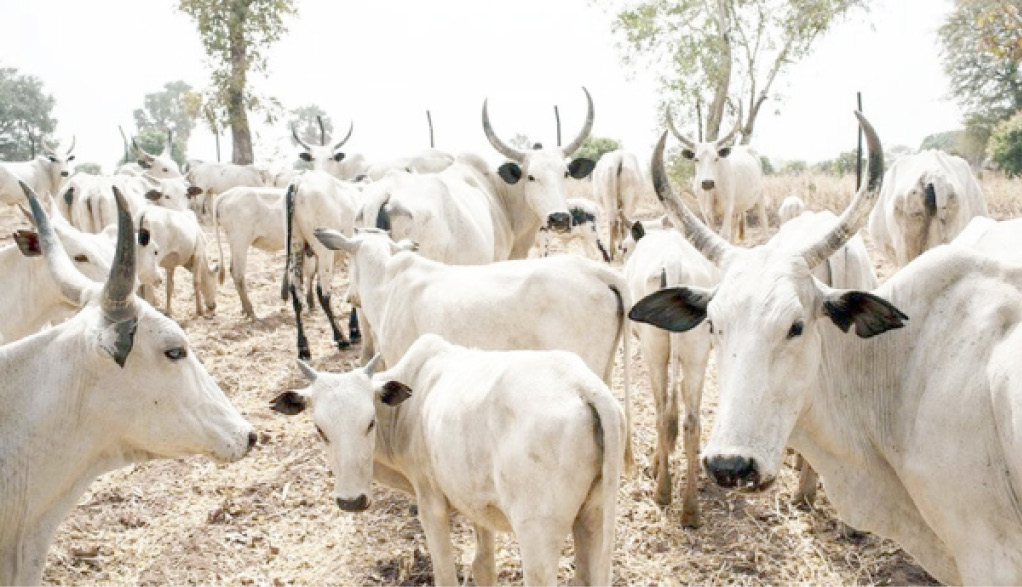Livestock crisis: Issues new agric minister should consider
The new Minister of Agriculture and Rural Development, Dr Mohammad Mahmood Abubakar, last week, said his immediate priority would be to develop the livestock sector, which has continued to face lingering problems due to neglect and the resulting clashes between crop farmers and herdsmen. In 2019, the National Economic Council (NEC) approved a 10-year National […]

Livestock
The new Minister of Agriculture and Rural Development, Dr Mohammad Mahmood Abubakar, last week, said his immediate priority would be to develop the livestock sector, which has continued to face lingering problems due to neglect and the resulting clashes between crop farmers and herdsmen.
In 2019, the National Economic Council (NEC) approved a 10-year National Livestock Transformation Plan (NLTP) 2019-2028, which was expected to gulp N92 billion in the first phase.
The plan supports development of grazing reserves in each of the seven pilot states of Adamawa, Benue, Kaduna, Nasarawa, Plateau, Taraba, and Zamfara which suffered severely from crisis, with four ranches (small, intermediate, medium and large) in each grazing reserve.
The plan was a product of collaborations between the Federal Ministries of Agriculture and Rural Development, Interior, and the National Economic Council headed by the Vice President.
Today, the plan is largely shrouded in controversies.
Under the NLTP, ranchers, smallholder herders and investors are expected to bring their cattle to a fattening ranch site where cattle would be fed with high quality feeds and provided with water for 150 days to boost average weight from 200-250kg to 450-500kg.
Each feedlot will contain 3000 cattle per cycle with two cycles per year, with each cow gaining an average daily weigh of 1.2-2.5kg depending on its breed.
At the point of slaughtering, a cow is expected to weigh between 400 to 450kg after the 150 days and can fetch around N350,000 on average for the farmer at N900 per kg.
By the end of the 10-year plan (2028), the subsector will be worth N8.16 trillion, representing 2.56 times growth from its current N2.9 trillion GDP value to the economy.
But two years down the line, the plan, which has the potentials to solve the lingering problem of herder-farmer killings, according to Crisis Group, is “facing obstacles, including staff and funding shortages as well as political opposition.”
The organization warns that “If this initiative fails, there could be more rural violence” adding that the federal government “should work with donors to raise both money and awareness of the scheme’s benefits.”
According to them, “The new plan represents Nigeria’s most comprehensive strategy yet to encourage pastoralists to switch to ranching and other sedentary livestock production systems. Modernising the livestock sector is key to resolving the herder-farmer conflict, which threatens Nigeria’s political stability and food security.”
Dr. Junaidu A. Maina, Chairman of Danwaire Farms Ltd, has suggested five systems of cattle production that the federal government could implement to drive an effective livestock sector
He noted that there are 415 identified grazing reserves that cover a total of 4.3m hectares exist in 19 Northern states, which the federal and state government could select and develop some for communal use in dry and at peak of farming seasons but charge grazing fees.
He suggested states should also grant land titles to encouraged sedentarization as start-up ranchers or agro-pastoralists under five Start-up ranchers (models): Small Ranches (25-50 heads of cattle) with about 50 hectares of land; Intermediary Ranches (51-100 heads of cattle) with about 150 hectares of land; Medium Ranches (101-250 heads of cattle) with about 300 hectares of land; Large Ranches( 300 -500 heads of cattle) with 500 hectares of land and Commercial Ranches (1000 cattle plus) a minimum of 5000 hectares.
“Government should provide ranch starter packages in the form of special financing and beneficiaries must sign up; to Animal Identification System (AIM), Enrolment into National Herd Register, Register with Anchor Growers Programme, Procurement livestock Insurance and Enrolment on Ranchers’ capacity Building Scheme,” he said.
On development of feedlots and smallholder fatteners schemes, Dr Junaidu said “Medium size feedlots operations and smallholder fattening schemes using indigenous cattle provide quality animals for slaughter and they exist in many major cities.
“These producers should be trained on how to source for quality animals and adapt technologies to improve weight gains and finishing. Federal and state governments should assist in accessing funds and access to premium markets for their products,” he said.
He also suggested that specialized farms (high tech) for artificial insemination (AI) and embryo transfers (ET) for production of InCalf heifers, breeding bulls and semen should be encouraged, adding that there should be a “crossbreeding with selected exotic breeds and long-term selection for creation of national breeds.”
Already, the Federal Ministry of Agriculture and Rural Development under Alhaji Sabo Nanono had stated implementing the RUGA initiative in some of the grazing reserves in Borno, Gombe, Niger and Nasarawa states. Efforts must be made to increase the tempo of activities in these model sites while the federal government must not delay the necessary funding for the project.
